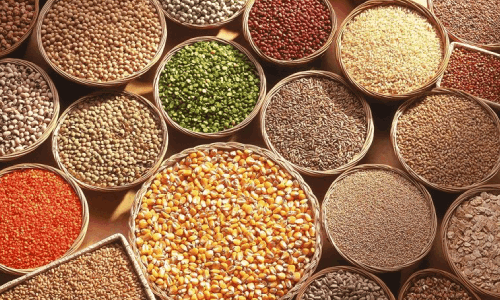The internet has been singing praises about the goodness of millets for a while now. But are millets really that good and nutritious? Let us see what Ayurveda has to say about millets! First things first, millets are indeed nutritious. They are packed with essential nutrients and have been a staple in the diets of many cultures for centuries. They are a good source of dietary fibre, vitamins and minerals. However, Ayurveda offers a unique perspective on millets and their consumption. If your digestion is important, don’t make millets an everyday part of your diet – instead have them once or twice a week! This is because millets are mentioned as “Kudhanya” (unwholesome grain) in Ayurveda and they can disrupt the balance of Doshas if taken on a regular basis. In the past, the kings and the brahmins and those who belonged to the upper class of the society only could eat nourishing grains like rice and wheat. Millets were mostly eaten by the lower sections of the society as they were more affordable though less nourishing. But not all millets are made equal. Some millets are good for Vata, some are good for Pitta and Kapha but not Vata and so on. Best millets to consume according to Ayurveda It’s important to note that not all millets are created equal in the eyes of Ayurveda. Ayurveda recognizes that various millets have different effects on the Doshas, making some more suitable for specific body types. Here are some millets recommended by Ayurveda: Jowar (Sorghum) Jowar has gluten but is light to digest. It also has cooling properties. It is best to consume Jowar once or twice a week as it is “Kledakara” (clogs channels) and increases Vata. Bajra (Pearl Millet) Bajra is a gluten-free millet and is very light to digest. It is an excellent choice if you are trying to lose weight or if you have a sensitive digestive system. Barley Barley is one of my favourite millets! It helps eliminate mucous and relieve constipation. It is also excellent for consumption during spring and fall. Also, drinking barley water is beneficial in urinary tract infections. Barley is of 2 types. The smaller type (Yavaka) should not be used every day. Ragi (Finger Millet) Ragi is another favourite of mine. It is gluten free and is rich in protein. The millet is also super light and digestive. Ragi also helps balance all Doshas and rejuvenate your body. It also purifies blood and acts as an aphrodisiac. While Ayurveda recommends the consumption of the millets mentioned above, it is essential to be aware of certain considerations. Millets are generally considered goitrogens – substances that may interfere with thyroid function. Therefore, you should not consume them if you have thyroid issues. You can join our Health Programs for mind and body detox. And If you are struggling with any health issues, you can book a consultation with us or give us a message via WhatsApp at +91 79074 89839. We have the Best Ayurvedic Doctors in Trivandrum who is always glad to helps you . If you have any queries, contact us. You can also visit.
Ayurveda Millets : A Path to Balance and Vitality

